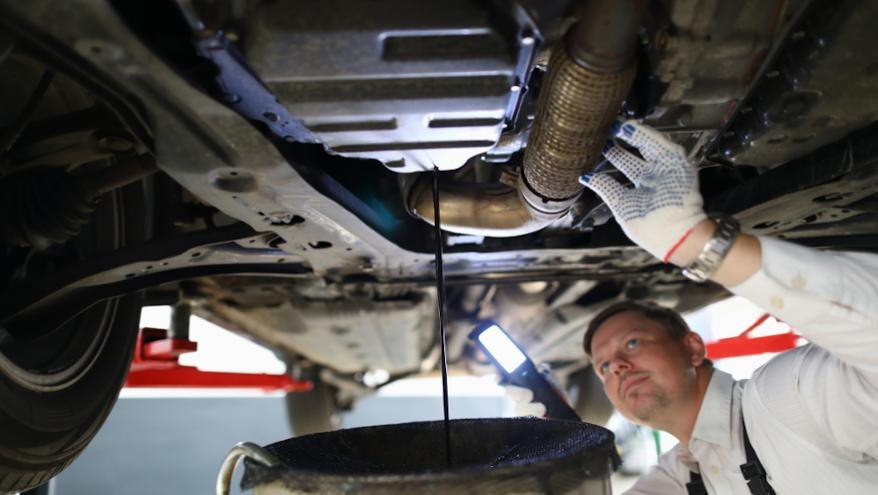COMMENTARY: Moving at the speed of light – The road to better CRs for dealers

By subscribing, you agree to receive communications from Auto Remarketing and our partners in accordance with our Privacy Policy. We may share your information with select partners and sponsors who may contact you about their products and services. You may unsubscribe at any time.
ATLANTA –
It’s been a little over four months since I took on the role of leading Manheim’s vehicle information. And in that time, I’ve been thinking a lot about light. Maybe it’s because we’re finally seeing the light at the end of the tunnel with progress on COVID vaccines.
And maybe it’s because it feels like we’ve been moving at the speed of light on the digital wholesale front for more than a year.
Our clients have not been shy about sharing their feelings about this transition to a more digital-centric environment. I have heard appreciation for our quick response, and I have heard the concerns of having a more limited access to viewing inventory in person. Temporarily losing the ability to “kick the tires” and perform the “scratch and sniff” test hindered confidence levels of the clients who relied on their more traditional way of evaluating inventory.
Having that rug pulled from under you in an instant was not an easy adjustment for some. While the safety of our clients, team members and industry partners moved even further to the forefront, we also had to solve for the sudden lack of access that clients were accustomed to.
For all of the challenges of COVID-19, one positive was how quickly it sped up technology innovation — and adoption — in wholesale. What would have taken the industry years to achieve, we achieved in weeks and months instead.
One of the areas that got the most focus, at least for us at Manheim, was on the vehicle information front—everything from condition reports to images and beyond that gives buyers the information they need to make good purchase decisions.
Subscribe to Auto Remarketing to stay informed and stay ahead.
By subscribing, you agree to receive communications from Auto Remarketing and our partners in accordance with our Privacy Policy. We may share your information with select partners and sponsors who may contact you about their products and services. You may unsubscribe at any time.
While I now lead vehicle information for Manheim, at the time COVID hit, I was the GM at Manheim St. Pete, a location that specializes in under $5,000 cars. Smaller independent dealers, who typically lean more toward physical sales, were our primary clients.
Working shoulder-to-shoulder with them through the sudden transition to all-digital gave me so much valuable insight about what our clients truly need to not just buy digitally — but to prefer to buy that way. And it all comes back to giving them the same level of detail about vehicles online that they can get in person.
The great thing about digital is that it can actually give dealers even more information — more efficiently — than they can get in a physical setting. But the industry still has a little way to go to get there.
They say that a picture is worth a thousand words, and improving imaging is the number one opportunity we have to give clients the added information they need. In 2020, we more than doubled the number of images in condition reports online, introducing more angles of the vehicle inside and out.
We also formed an advisory panel to stay close to our clients’ needs as we evolve our vehicle information offerings and instituted a condition report quality program, which includes extensive training of inspectors and increased auditing of condition reports.
Our clients have already noted the difference, too. In a recent Manheim survey, around 60% of clients say they have noticed changes, most often mentioning additional images, more consistency and better descriptions. And a large majority of them claim that these changes have made them more confident in understanding a vehicle’s condition.
But we’re not stopping there.
Our acquisition of Fyusion, an incredibly innovative, industry-leading computer vision company based in San Francisco, will of course bring an unparalleled level of vehicle imaging and insights. In the near term, however, we’re getting ready to make some big changes across our digital platforms that we’re sure our clients will celebrate. Things like higher quality imaging, as well as capturing more mechanical and safety data—all things our clients want and need to know when purchasing wholesale vehicles.
For now, it’s no secret that condition reports are probably the most criticized things in auctions these days. My goal in the immediate future is to make them at least move to second place.
But my ultimate goal is to ensure that clients come to love condition reports, rely on them for more insights than they can get otherwise and ultimately buy more confidently online than they do in person.
It may seem like a lofty goal right now, but I firmly believe it’s achievable. That’s the reason I was excited to take the lead on vehicle information. And now, a little more than four months into the role, I’m more sure about that than ever before.
The work to improve not just the quantity, but the quality, of vehicle information is an ongoing journey. But as long as we keep moving at the speed of light, we’ll get there sooner than anyone could have predicted a year ago.
Brad Burns is AVP of vehicle information at Manheim


